Finding the right ski size for your child can feel like a puzzle. But here’s the deal: when their skis fit properly, they’re safer, more confident, and have way more fun on the slopes. Get it wrong, though, and skiing can quickly turn into a frustrating experience.
Here’s the quick takeaway:
- Safety First: Skis that are too long are harder to control. Too short? They lack stability.
- Faster Learning: Properly sized skis help kids focus on technique, not fighting their gear.
- Comfort Matters: Right-sized skis mean less fatigue and more runs.
Snowfeet* offers a game-changing option for kids. These shorter, lightweight skis (some as small as 38 cm) are easier to handle, work with regular winter boots, and grow with your child. Plus, they’re portable enough to fit in a backpack. Perfect for kids learning the ropes or just having fun in the backyard.
Need help picking the right size? Here’s a rule of thumb: traditional skis should hit between your child’s chin and nose, while Snowfeet* models simplify sizing thanks to their universal fit. And don’t forget to consider their height, weight, skill level, and how fast they’re growing.
Want to make ski days stress-free? Stick around for tips, sizing charts, and why Snowfeet* might just be the smarter choice for your family.
How to Choose the Best Skis for Kids
How to Size Skis for Kids: Key Factors and Methods
Choosing the right ski size for your child isn’t just about picking something that looks cool - it’s about ensuring safety, boosting confidence, and supporting skill development. To do this, you’ll need to consider a mix of physical measurements, experience, skiing style, and how quickly your child is growing.
Main Factors in Ski Sizing
- Height and Weight: A good rule of thumb is that skis should reach somewhere between your child’s chin and nose. However, keep in mind that this isn’t a one-size-fits-all rule. Balance and coordination, especially for younger skiers, can influence what works best.
- Age and Skill Level: An experienced 8-year-old skier will need different equipment than a beginner of the same size. For new skiers, look for gear that’s forgiving - something that doesn’t make every turn feel like a battle.
- Skiing Style: Does your kid love cruising down groomed runs, or are they all about jumps and tackling varied terrain? Their preferred style should guide your choice of skis.
- Growth Spurts: Kids grow fast - sometimes several inches in just one season. Look for options that can accommodate this rapid growth without compromising performance.
Traditional Skis vs. Snowfeet* Short Skis
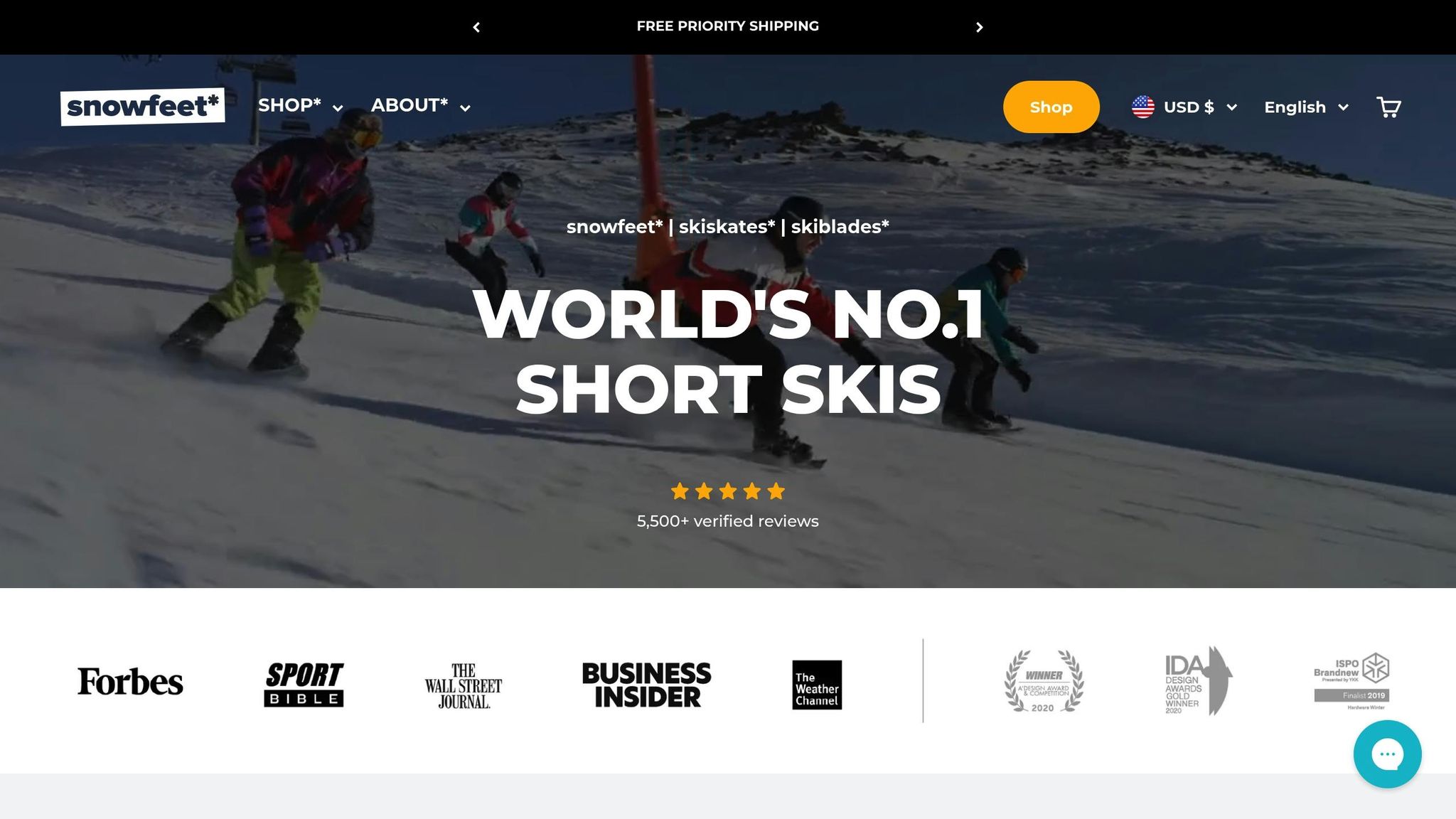
Traditional kids’ skis from brands like Salomon or Atomic typically range from 80 to 140 cm in length. On the other hand, Snowfeet* products take a different approach with a much shorter design. For example, their Skiskates measure just 44 cm, and even their Skiblade models are significantly shorter than conventional skis.
Short skis, like those from Snowfeet*, come with some big advantages. Their compact size makes them easier for kids to maneuver, which can speed up the learning process. With better control, kids can focus on improving their technique instead of struggling with oversized equipment. Plus, unlike traditional skis that require specialized ski boots, Snowfeet* products work with regular winter boots. They’re lightweight and small enough to fit in a backpack - perfect for family trips or quick practice sessions.
When deciding between traditional skis and short skis, double-check the sizing guidelines for each type to ensure the best fit.
How to Measure for Ski Size
- Height: Have your child stand barefoot against a wall and measure their height using a flat marker. Record the measurement in both inches and centimeters to match different sizing charts.
- Weight: Weight plays a role in how a ski flexes and responds. Use a bathroom scale to get an accurate reading, but skip the heavy winter gear when weighing.
- Shoe Size: Measure both feet using their regular winter boots to ensure bindings fit correctly.
- Skiing Experience: Think beyond just the number of seasons they’ve skied. How many actual days have they spent on the slopes? Beginners will benefit from more forgiving equipment, while experienced skiers can handle more advanced gear.
Snowfeet*’s shorter and more flexible designs are particularly good at accommodating growth and making skiing accessible for kids of all experience levels.
2025 Kids' Ski Sizing Chart
Getting the right ski size is key to keeping your child safe and ensuring they have a blast on the slopes.
General Ski Sizing Guidelines
When it comes to traditional skis from brands like Salomon, Atomic, and Rossignol, the size you choose should match your child's height, weight, and skill level. Here's the general rule: shorter skis are easier for beginners to control, while longer skis offer more stability for advanced skiers who like to pick up speed.
| Height (inches) | Weight (pounds) | Ski Length Beginner (cm) | Ski Length Experienced (cm) |
|---|---|---|---|
| 37 | 34 | 70 | 80 |
| 40 | 37 | 80 | 90 |
| 43 | 42 | 90 | 100 |
| 45 | 46 | 95 | 105 |
| 47 | 50 | 100 | 110 |
| 50 | 57 | 110 | 120 |
| 53 | 63 | 115 | 125 |
| 55 | 70 | 120 | 130 |
| 57 | 79 | 130 | 140 |
For beginners or lighter kids, shorter skis make turning easier and more manageable. On the other hand, experienced or heavier skiers benefit from longer skis, which provide better balance and stability at higher speeds. A good rule of thumb? Don’t go more than 10 cm above the recommended length. If your child prefers quick, snappy turns, opt for a shorter ski. If they’re all about speed, go a bit longer.
Snowfeet* Product Sizing Chart
If traditional ski sizing feels a bit overwhelming, Snowfeet* products are a game-changer. Their universal fit design takes the guesswork out of sizing, making them a great option for growing kids.
| Product | Length (cm) | Price |
|---|---|---|
| Snowfeet Mini Ski Skates | 38 | From $150 |
| Snowfeet Skiskates | 44 | From $390 |
| Snowfeet PRO | 50 | $199 |
| Snowfeet Skiblades | 65 | From $450 |
Snowfeet* products stand out because they don’t require special ski boots. Instead, they work with regular winter boots, which means your child can use the same pair season after season as they grow. This can save you a lot of money over time.
- Snowfeet Mini Ski Skates (38 cm): Perfect for younger kids. They’re lightweight, easy to pack, and help build coordination.
- Snowfeet Skiskates (44 cm): A great all-rounder. They strike a balance between stability and maneuverability, making them ideal for kids who are improving their skills.
- Snowfeet PRO and Skiblades (50–65 cm): These are built for more advanced skiers, offering more length for added control and versatility.
Unlike traditional skis, where terrain often dictates the best length (shorter skis for groomed runs, longer for ungroomed conditions), Snowfeet* products work well in all kinds of snow. This versatility means your child can use the same pair whether they’re just starting out on the bunny hill or tackling more challenging slopes as their confidence grows.
sbb-itb-17ade95
Why Choose Snowfeet* for Growing Skiers
Snowfeet* products are designed to make skiing easier and more fun for kids, offering a host of advantages over traditional ski gear. These short skis are tailored for young, growing skiers, helping them learn faster and transition smoothly from beginner to confident skier.
Key Benefits of Snowfeet* Products
No Need for Special Boots – Unlike traditional skis that require expensive, specialized boots (which kids outgrow quickly), Snowfeet* work with regular winter boots - ones your child probably already owns. This means fewer costs and less hassle.
Super Portable – Snowfeet* are small enough to fit in a backpack, making them easy for kids to carry. This convenience not only simplifies trips to the slopes but also encourages kids to handle their own gear.
Boosts Confidence and Independence – Ski instructors love short skis like Snowfeet* because they give kids better control on the snow. That extra control helps young skiers build confidence and become independent faster.
Budget-Friendly for Families – Kids grow fast, and traditional ski setups often require frequent (and pricey) upgrades. Snowfeet* feature universal sizing, so they can grow with your child, saving you money in the long run.
Works Anywhere – Whether your child is on groomed trails, in a terrain park, or even just playing in the backyard, Snowfeet* deliver consistent performance on all kinds of snow. This versatility encourages more practice, which leads to quicker skill development.
Comparison: Snowfeet* vs. Traditional Skis
Here’s a quick look at how Snowfeet* stack up against traditional skis:
| Feature | Snowfeet* Products | Traditional Skis |
|---|---|---|
| Boot Requirement | Works with regular winter boots | Requires specialized ski boots |
| Weight | Lightweight and easy to carry | Heavier and bulkier |
| Portability | Fits in a backpack | Harder to transport |
| Learning Curve | Easier to control for beginners | Can be more difficult to learn on |
| Growth Adaptability | Universal sizing grows with kids | Frequent upgrades needed |
| Versatility | Performs well on all terrains | Performance varies with conditions |
Snowfeet* are a game-changer for young skiers. Forget the hassle of traditional ski gear - no more specialized boots, heavy equipment, or constant resizing. With Snowfeet*, your child can grab their gear and hit the slopes with ease, gaining skills and confidence along the way. It’s a smart, practical choice for families looking for a fun, flexible, and affordable way to enjoy skiing.
Tips for Selecting the Perfect Fit
Choosing the right Snowfeet* for your child is all about finding gear that matches their growth and skiing goals. Here’s how to pick the best model to keep them safe and happy on the slopes.
How to Choose the Right Snowfeet* Model
Start by thinking about your child's experience level. If they're just starting out, the Snowfeet* Mini Ski Skates (38 cm) are a fantastic option. Their compact size provides a stable platform, making it easier for beginners to develop confidence and control.
For kids who’ve already nailed the basics and want a bit more versatility, check out the Snowfeet* PRO (50 cm) or Skiskates (44 cm). These models are great for casual carving or even small jumps while staying easy to manage for growing skiers.
Also, factor in where they’ll be skiing. Snowfeet* are ideal for groomed slopes at ski resorts, which makes them perfect for family trips or lessons. If your child dreams of tackling powder, the Snowfeet* POWDER (99 cm) might be a better fit for exploring deeper snow.
Don’t forget to consider their age and independence. Younger kids (around 4–8 years old) will benefit from the lightweight and easy-to-handle Mini Ski Skates. Older kids (9–14 years old) might prefer the added performance and features of slightly longer models. These tips will help you keep pace with your child’s evolving skills.
When to Size Up or Down
For beginners, stick with the 38 cm Mini Ski Skates to make turning easier. As they improve, you can move up to longer models for more versatility.
If your child quickly gets the hang of basic movements, upgrading to a longer model earlier can open up new challenges and terrain. It’s a good idea to size up when they’re ready for tougher slopes or want better performance.
Growth spurts are another thing to watch for. Snowfeet* are designed to work with regular winter boots, so keep an eye on their boot size - especially around ages 10–12 - to ensure a snug, comfortable fit.
Confidence matters, too. A bold 8-year-old might handle a slightly longer model just fine, while a more cautious child might prefer sticking with a shorter option. Paying attention to these details makes the transition to Snowfeet* smoother and more enjoyable.
Switching from Traditional Skis to Snowfeet*
If your child is moving from traditional skis to Snowfeet*, give them a few practice runs on familiar slopes to get used to the faster response.
One big plus of Snowfeet* is how easy they are to handle. Their lightweight and portable design means kids can carry their own gear without struggling with long, bulky skis. Starting on slopes they already know can help build confidence during the adjustment period.
Snowfeet* are great for maintaining control at any speed, helping your child feel secure as they learn.
In the long run, making the switch to Snowfeet* can improve their overall skiing technique. The responsive design encourages better balance and precision, giving them equipment that grows with their abilities. Snowfeet* are built to adapt as your child’s skills and confidence evolve over time.
Conclusion: Safety, Fun, and Growth
Getting the right ski size is a game-changer for safe and confident winter adventures. When gear fits well, kids feel more secure, pick up skills faster, and - most importantly - have a blast on the slopes.
Snowfeet* offers a smart alternative to bulky, pricey equipment that kids outgrow in no time. Its lightweight design makes it easy for kids to carry their own gear, and since it works with regular winter boots, there’s no need to keep upgrading ski boots.
What’s more, Snowfeet* helps kids learn faster. Its responsive design gives them better control, making it easier to tackle basic turns - even on their first few runs. No more struggling with oversized skis that slow them down.
Another big plus? Snowfeet* grows with your child. Starting with the 38 cm Mini Ski Skates, kids can move up through different models as their skills improve, cutting out the hassle and expense of constantly replacing gear.
For families on the go, Snowfeet* is a total game-changer. Forget about lugging around awkward rental gear or oversized bags - this compact option fits right into a backpack. It’s perfect for spontaneous snow days, giving your child the right gear to stay safe, build skills, and enjoy every moment on the slopes.
FAQs
How are Snowfeet products safer and easier for kids compared to traditional skis?
Snowfeet products are a great option for kids, offering a safer and easier alternative to traditional skis. Thanks to their shorter and lighter design, they’re far less intimidating and much easier to control. This gives young skiers a boost of confidence while they’re learning. Plus, the compact size helps improve balance and lowers the chances of falls or injuries - always a win for parents and kids alike.
Another big perk? Snowfeet products are super portable and versatile. Unlike traditional skis, which can be bulky and tricky for little ones to handle, Snowfeet’s design makes them simple to carry and use. They’re a fun and approachable way for kids to jump into winter sports while building their skills without the hassle of managing heavy, oversized gear.
Can Snowfeet skiskates grow with my child, or will I need to keep buying new gear?
Snowfeet skiskates are made with kids in mind, featuring adjustable bindings that fit a variety of boot sizes. This clever design means they can keep up with your child’s growth spurts, saving you from constantly needing to upgrade gear like you would with traditional skis or snowboards.
Thanks to their compact and lightweight build, these skiskates are easy for kids to manage. They can hit the slopes with confidence, without being weighed down by oversized, clunky equipment. Snowfeet offers a simple, budget-friendly way to keep your child enjoying winter sports as they grow.
What should I consider when deciding between traditional skis and Snowfeet for my child who is new to skiing?
When choosing between traditional skis and Snowfeet for a beginner, it's important to think about ease of use, safety, and adaptability. Snowfeet stand out because they’re lightweight, compact (ranging from 15 to 47 inches), and respond naturally to weight shifts. This makes them easier for kids to control and less overwhelming for someone just starting out. As a result, they can build confidence and pick up the basics more quickly.
Traditional skis, on the other hand, are better suited for advanced techniques but can be tricky for beginners. They’re bulkier, harder to handle, and often depend on ideal snow conditions, which isn’t always beginner-friendly. Snowfeet’s portable design minimizes the chances of falls and offers a smoother, more enjoyable learning experience for kids. Their thoughtful design makes them a great option for introducing children to winter sports without the usual stress.







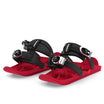
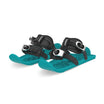












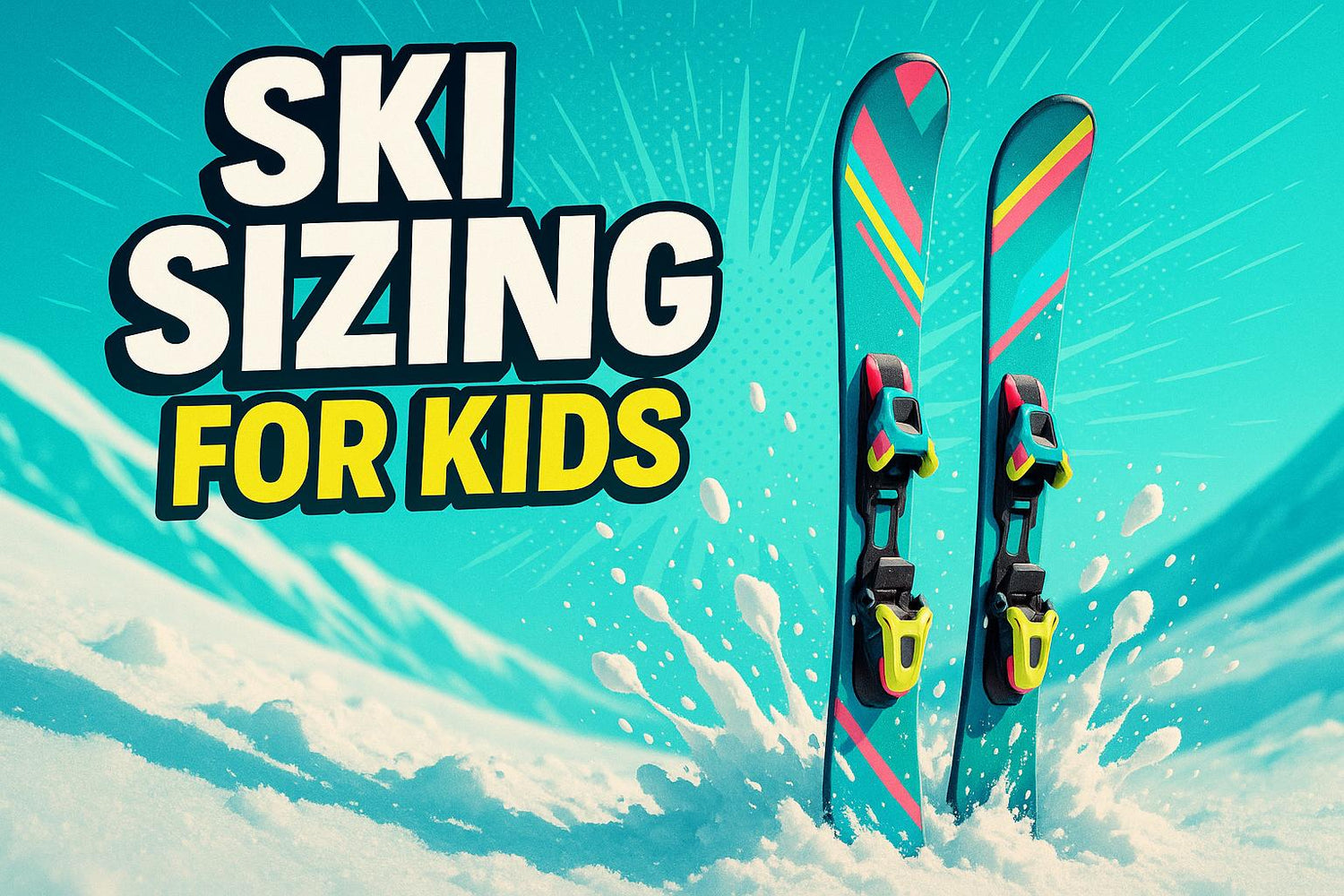
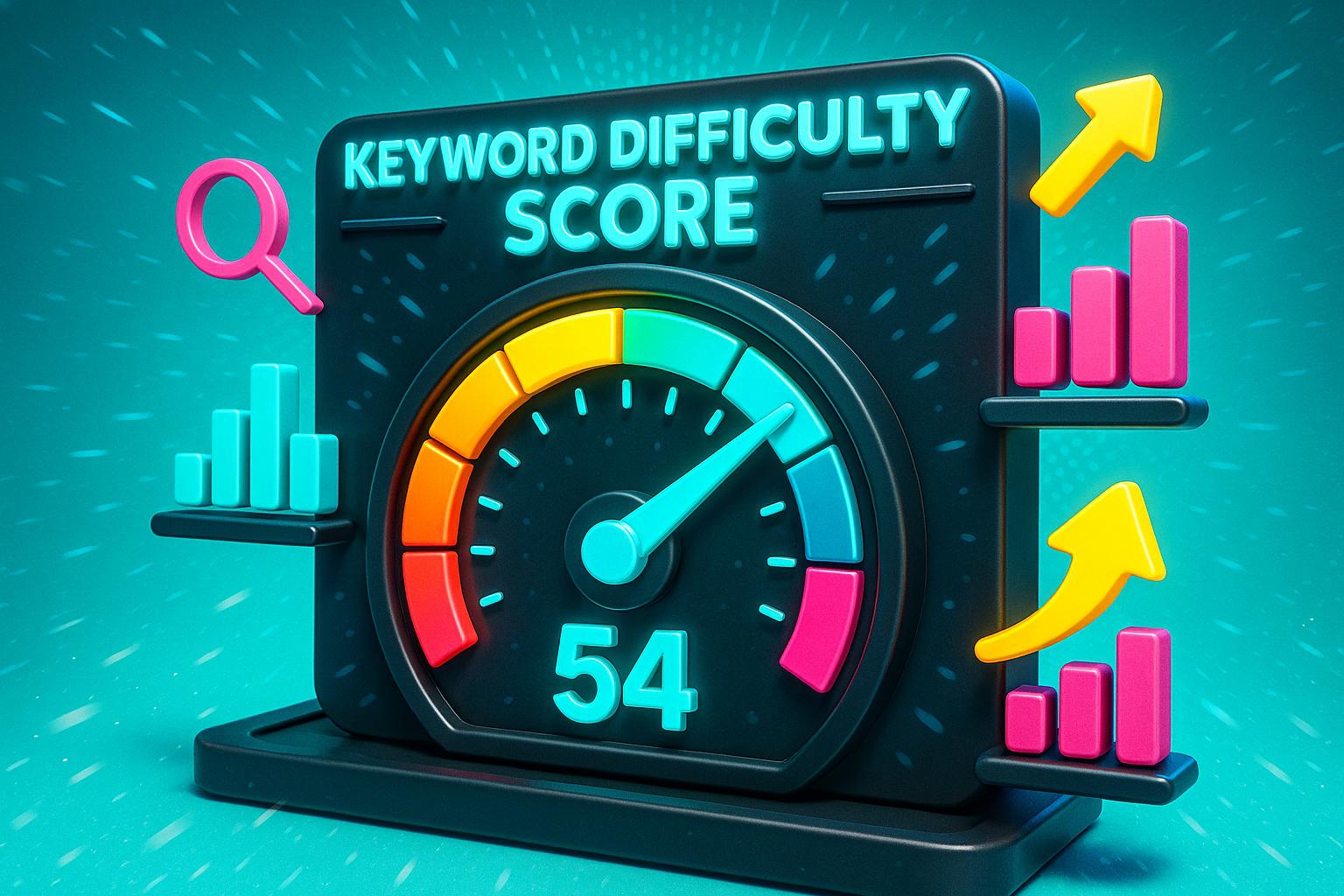
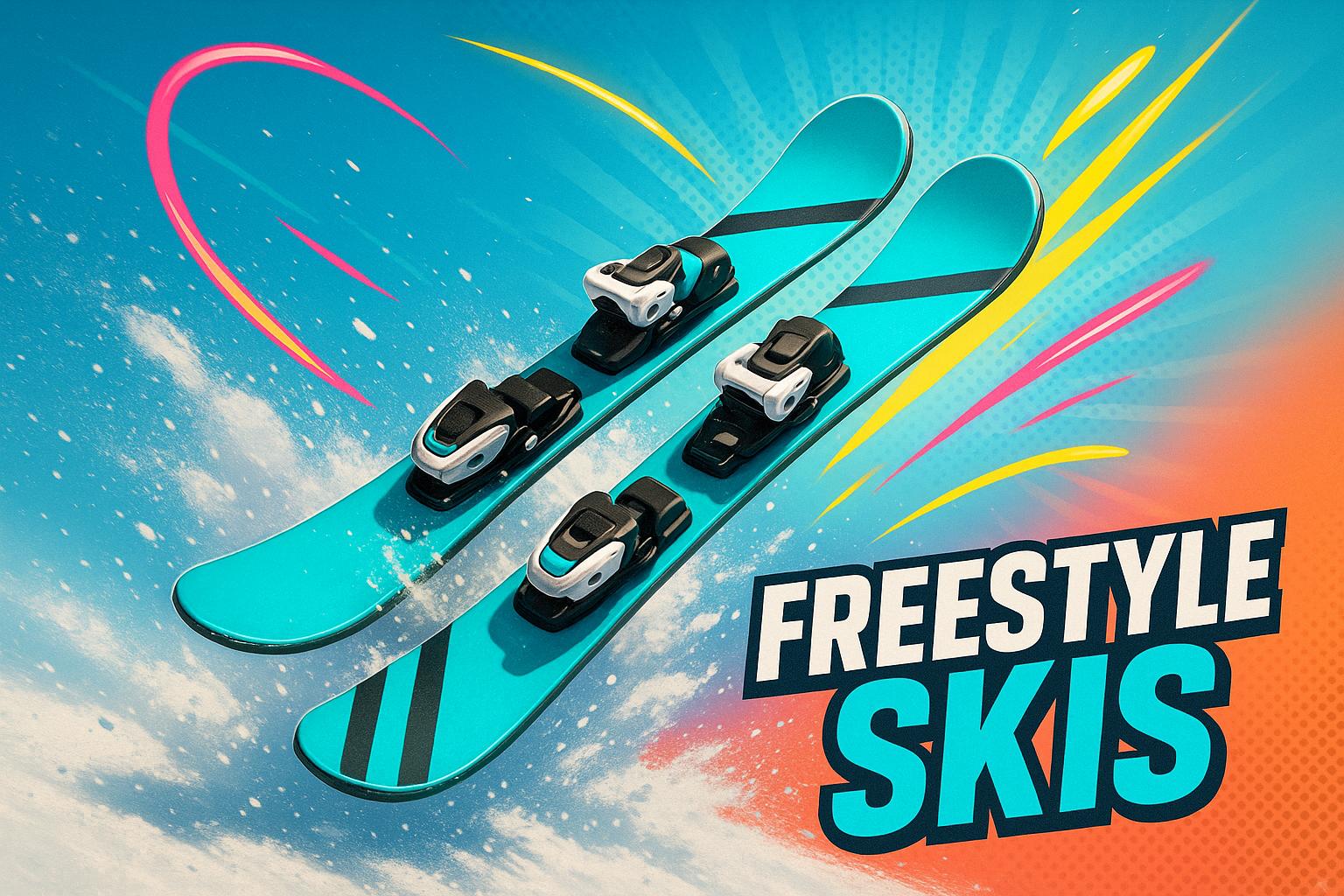




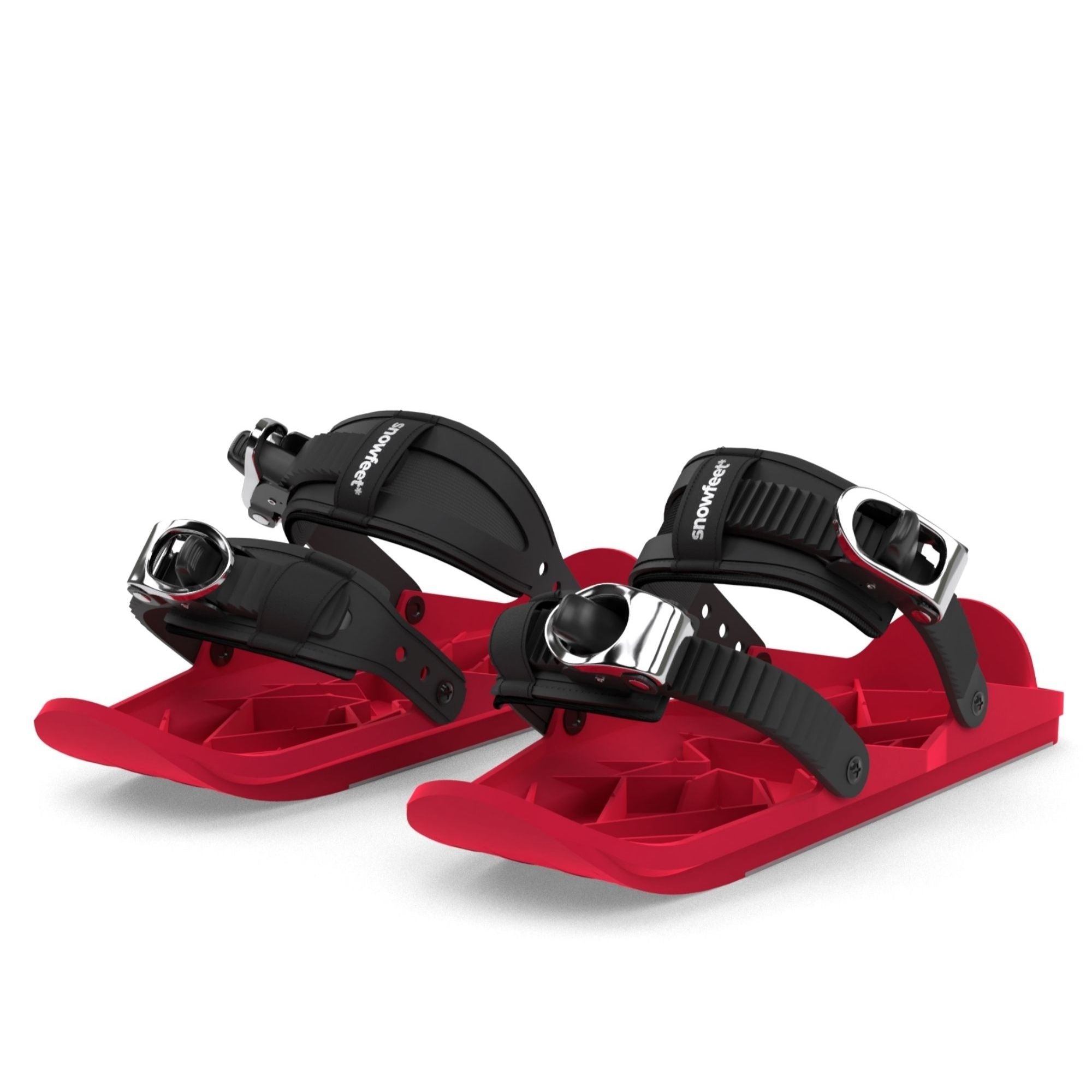
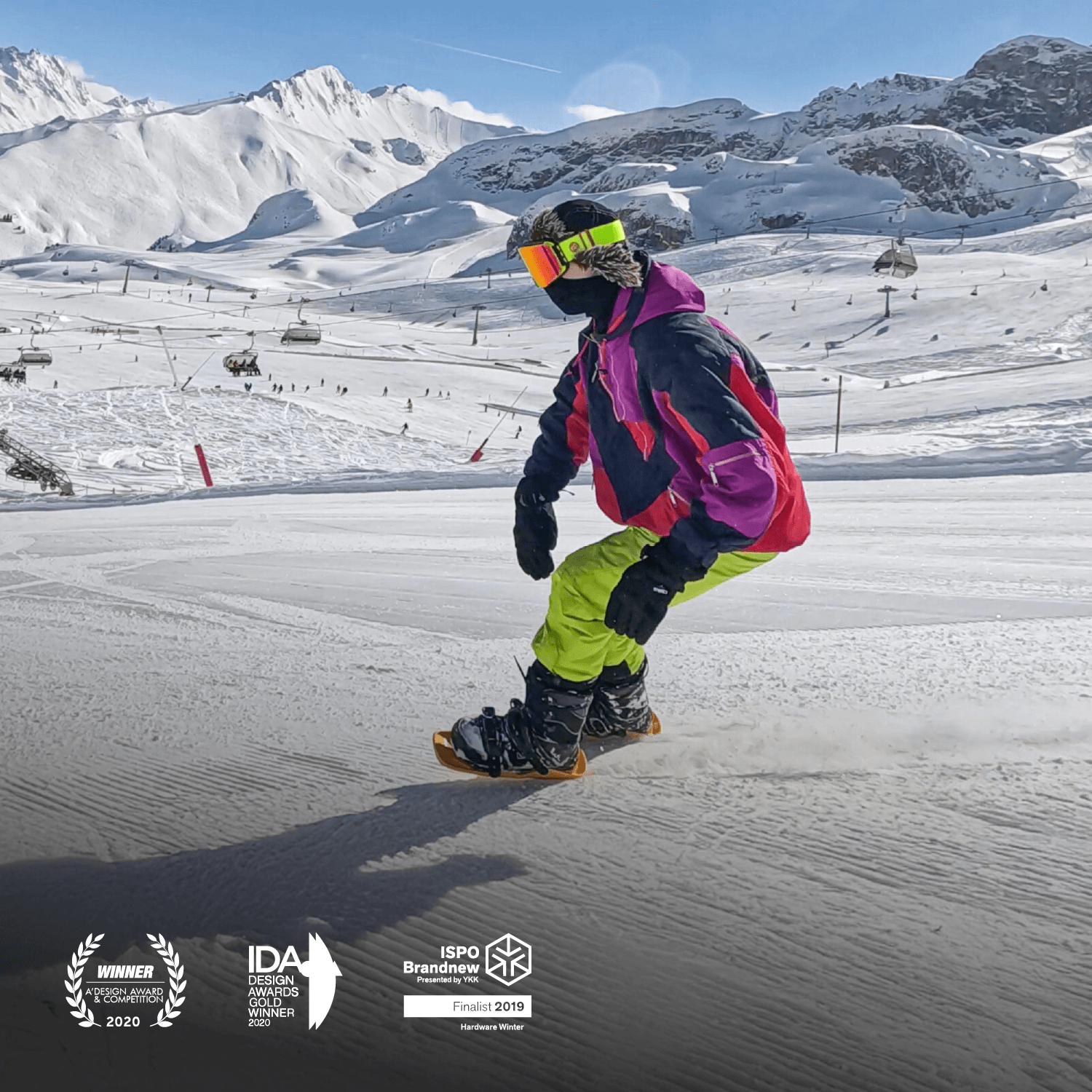




Leave a comment
This site is protected by hCaptcha and the hCaptcha Privacy Policy and Terms of Service apply.